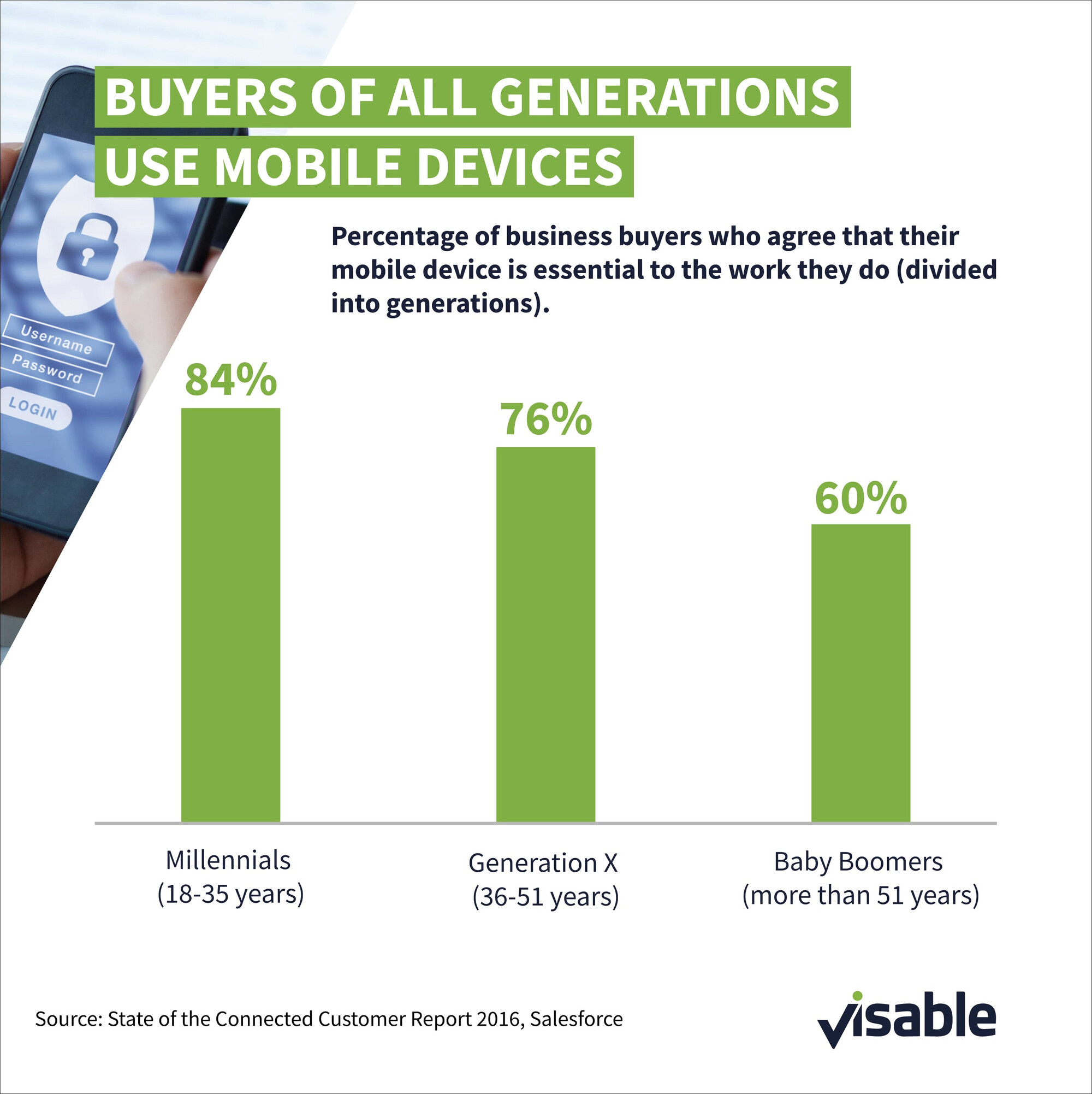Mobile marketing has gained significant relevance over the past few years – and experts estimate that this trend will continue to grow rapidly in future. Here is where you can find out more about this topic and how you can reach customers.

What is mobile marketing all about?
Mobile marketing covers all advertising messages that are communicated on mobile end devices such as smartphones and tablets. This makes it a section of both the marketing and the mobile commerce sectors. Compared to online marketing, which is geared towards desktop and laptop computers, mobile marketing has many particular factors to take into account: normally, the displays are smaller, requiring a different way of preparing and showing content. What’s more, there are other tools which can lead to interactions with potential customers, such as push notifications or QR code marketing.
The relevance of mobile marketing on the rise
Smartphones have become an indispensable companion in many areas of life for the majority of people today. B2B decision-makers, too, are increasingly gaining their information from the Internet via mobile devices.
This is also having an effect on the sales of mobile online advertising in Germany. In 2022, the industry beat all records, amounting to a value of around 6.82 billion euros, according to the Global Telecom and Entertainment & Media Outlook from PricewaterhouseCoopers (PwC). In 2018, the sales of this advertising segment amounted to less than half. By the year 2027, the auditing company is forecasting an additional upswing of nearly 9.27 billion euros.
Another figure which underscores the relevance of mobile marketing: in 2023, the share of mobile commerce is to rise to 43.4 per cent of all e-commerce retail sales, according to a projection by Insider Intelligence, compared to 41.8 per cent in 2022.

Strategies and tips for B2B mobile marketing
Today, the standard is to design the company’s own website and the online shop in such a way that the user interface is optimised for smartphone users searching via their mobile device. As the economic index B2B E-Commerce Konjunkturindex (B2Bkix – German) from ECC KÖLN, in collaboration with IntelliShop AG, shows, 72 per cent of B2B companies had already completed this, according to their own statement, at the start of 2023. Roughly one-third of all purchases are currently being made on mobile devices.
The survey for the economic index also provides valuable insights into what B2B customers expect from the use of company-own apps: additional services are seen as useful by 87 per cent, a direct ordering function by 80 per cent.
Other popular functions are a QR code scanner, for instance, or features in the area of virtual/augmented reality, which can be especially helpful in B2B for visually explaining complex matters with the use of computer-generated illustrations.
Marketing options for mobile devices
Despite the above-mentioned mobile-first measures, which also include the integration of mobile payment systems, the possibilities of mobile marketing, however, are far from being exhausted. Mobile devices like smartphones and tables offer a host of various touchpoints, with the aim to cultivate direct contact with customers. For example:
- In-app advertising and push notifications
- Text message marketing
- QR code marketing
- Location-based marketing
With the use of push notifications, customers can receive news of new products or deals from time to time. Provided these notifications do not get out of control, they are widely accepted today – particularly as the user must accept receiving them via an opt-in mechanism. In-app advertising is also indispensable, as it can be broadcast to the right users in a targeted way who in all likelihood are interested in the product being advertised, resulting in a comparably high click rate.
Text message marketing is a form of marketing that targets existing customers. With little effort and low expenditure, offers can be communicated in this way, reminders about important dates sent or simple customer surveys launched.
